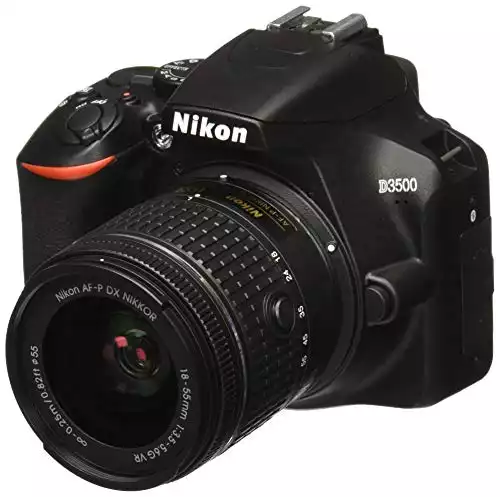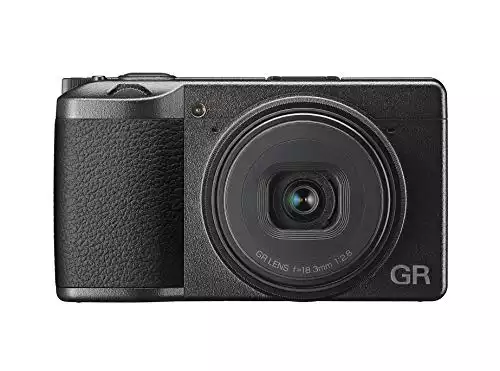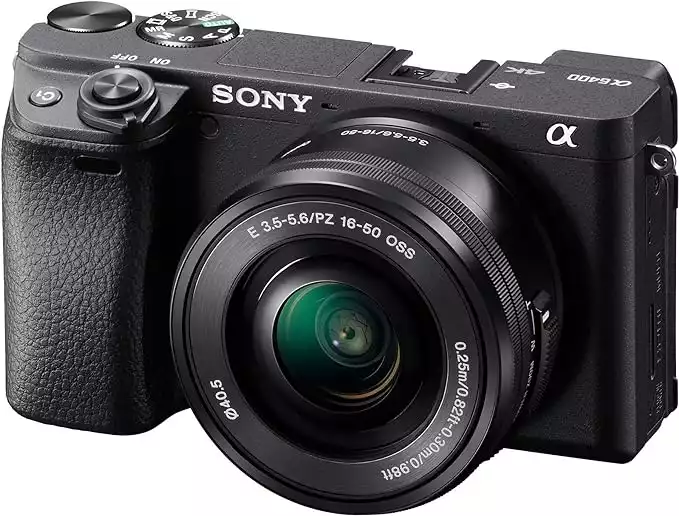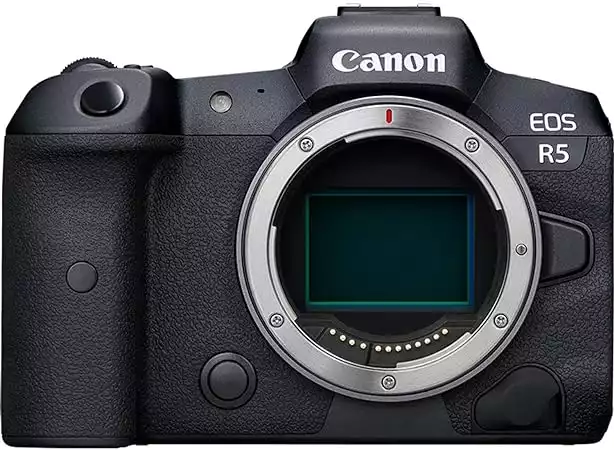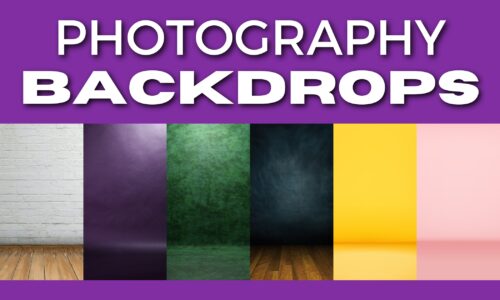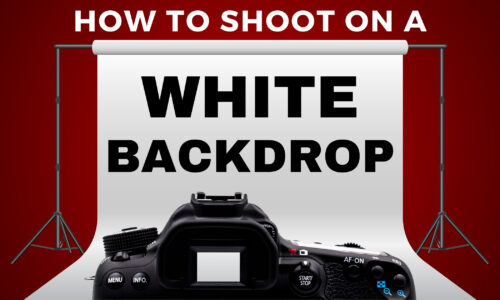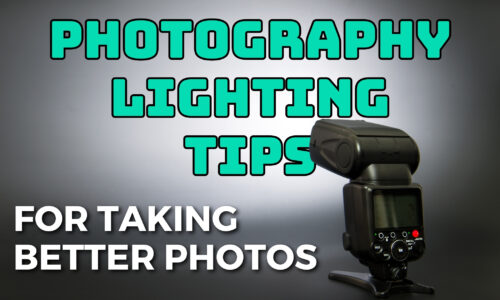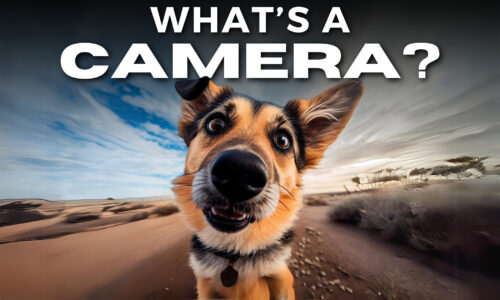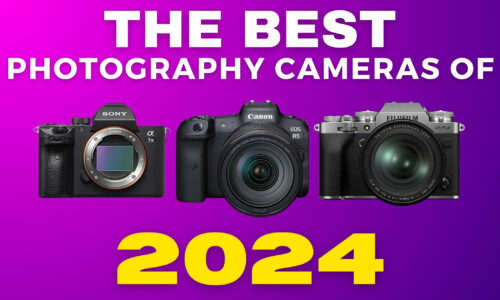Professional Camera Comparison: Top Brands for Photographers
With so many camera brands and models on the market, you might need a little help deciding which camera is best for you.
So in this professional camera comparison guide, I’ll compare the top professional camera brands used by photographers today – Canon, Nikon, Sony, Fujifilm, Olympus, and a few others.
We’ll compare key factors like image quality, features, price, lens systems, and more so you can learn which brand is the best fit for you.
After using 7 professional camera models and drawing from my 8+ years of experience as a full-time photographer, I’ll share thoughts you won’t find in the official product descriptions.
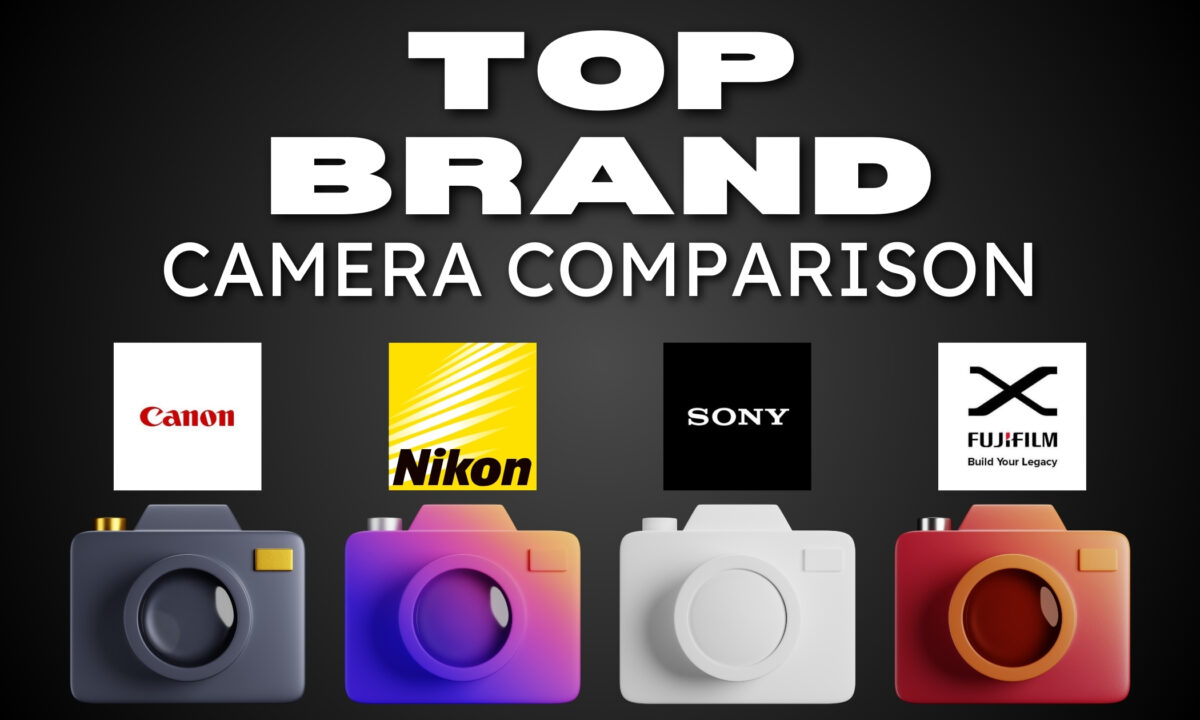
You’ll discover the unique strengths and weaknesses of each brand so you can confidently invest in a camera that aligns with your photography goals and vision.
If you shoot weddings, portraits, landscapes, sports, or commercial projects, you’ll learn which camera brand consistently delivers the sharp imagery, is durable, and has the best controls and performance you need to take pictures and impress clients.
Professional Camera Comparison Guide
Canon Cameras Overview
Canon offers a wide range of cameras for both beginners and professionals. Options like the Canon EOS R10 and Canon EOS R5 are leading choices in 2023. Canon cameras are known for their remarkable autofocus, image quality, and performance in different shooting conditions. They’re great options for sports, portraits, and general photography.
Nikon: A Close Look
Nikon’s lineup of professional cameras is equally impressive. Take the Nikon Z9 and Nikon Z7 II, for instance, which are recognized for their overall excellence and performance. Nikon cameras shine in aspects like low-light performance, dynamic range, and robust build quality, making them suitable for diverse photography ventures.
With its comfortable design and intuitive controls, it is an ideal choice for beginners looking to explore the world of photography.
Pioneering Sony Cameras
Sony has established itself as a frontrunner in the professional camera market, especially with its mirrorless camera lineup. The Sony A1, Sony A7S III, and Sony a7 IV are some popular options for professionals. These cameras have fast autofocus, excellent video capabilities, and high-resolution sensors, giving Sony an edge for hybrid shooters and videographers.
Innovations from Fujifilm
Fujifilm has gained attention with its GFX series of medium format cameras, such as the Fujifilm GFX 100S. Additionally, their APS-C cameras, like the Fujifilm X-H2S, meet professional standards. Fujifilm cameras are loved for their unique color science, film simulations, and ergonomic designs, providing a mix of technology and an artistic approach.
Why Choose Panasonic
Panasonic is another contender with strong offerings in the professional camera market. The Panasonic Lumix S5 IIX, for example, excels in video performance. Panasonic cameras are known for their video capabilities, in-body image stabilization, and user-friendly interfaces, making them a great choice for new videographers and photographers alike.
Casio Cameras
Casio, while not as well-known as other brands, offers a selection of compact cameras that work well in a variety of shooting scenarios. Their rugged, waterproof, and compact designs make them perfect for outdoor and travel photography, where convenience and durability matter a lot.
Olympus Cameras
Olympus, now part of the “OM System” brand. OM System, formed from Olympus’ camera division, aims to continue the legacy of Olympus by developing innovative cameras suitable for various professionals. With a focus on high-quality, compact designs, OM System’s cameras are set to make a splash in the photography world.
Olympus has a rich history of producing reliable and innovative cameras. And their Micro Four Thirds camera lineup, featuring compact sizes and an impressive lens selection, makes them an excellent option for photographers seeking portability without compromising quality.
The Legendary Hasselblad Cameras
Hasselblad is a renowned brand in the world of professional photography, known for their medium format camera systems. Offering incredible image quality, dynamic range, and superb color rendition, Hasselblad cameras are highly sought after by professionals who demand the best. Especially in the fields like fine art and commercial photography.
Leica: Artistry in Photography
Leica, a brand synonymous with luxury, showcases exquisite craftsmanship and superb image quality. Their cameras, such as the Leica M series rangefinders, are often praised for their minimalist designs and unparalleled lens quality. Leica cameras appeal to those who appreciate the blend of form and function in their photographic tools.
Advantages of Pentax Cameras
Pentax, a brand known for its rugged, weather-sealed camera bodies, caters to photographers who value durability and reliability. Their K-series DSLRs offer a unique blend of features and performance, making them great options for those seeking robust cameras packed with helpful functionalities.
Ricoh: A Reliable Photographer’s Tool
Ricoh offers a range of professional-grade cameras known for their compact designs and exceptional image quality. The Ricoh GR series, for example, is a popular choice among street photographers. With a focus on exceptional performance in a small package, Ricoh cameras prove that size isn’t always an indicator of capability.
Sigma’s Unique Selling Points
Sigma, primarily known for its lenses, also offers professional camera options like the Sigma fp. These cameras feature innovative designs with an emphasis on image quality and flexibility. Sigma’s cameras offer alternative options for photographers seeking unique tools to add a creative flair to their work.
Understanding Camera Types
Now, let’s look at the different types of cameras.
Comparing DSLR and Mirrorless Cameras
When deciding between DSLR (Digital Single Lens Reflex) and mirrorless cameras, think about your specific needs.
Both offer a range of features, but they differ in many ways. DSLRs are known for their sturdy build, optical viewfinder, and a wide variety of lenses. They’re popular among hobbyists and professionals.
On the other hand, mirrorless cameras often have a lighter, more compact design and offer quieter operation. They also have an electronic viewfinder, which can make previewing images and videos easier.
The Benefits of Point and Shoot Cameras
Point-and-shoot cameras offer a few advantages for casual photographers.
For example, they are:
- Lightweight
- Easy to use
- Affordable
A great compact digital camera featuring a 24-megapixel sensor and user-friendly touchscreen LCD for easy navigation and control.
While they may not provide as many adjustable settings as DSLR or mirrorless cameras, compact cameras can still deliver high-quality images and videos. Pick one up if you’re a beginner or want a camera to capture everyday moments without investing in expensive equipment.
What is a Medium-Format Camera?
A medium format camera is a high-end, professional-grade camera that uses a larger image sensor than traditional DSLRs and mirrorless cameras.
With the increased sensor size, medium format cameras can capture more detail and offer better dynamic range, making them ideal for commercial and fine art photography. But, these cameras are usually more expensive and less portable than others.
Full-Frame Camera Systems
Full-frame system cameras have a sensor that’s equivalent in size to 35mm film, resulting in superior image quality and low-light performance. The larger sensor also allows more megapixels to be packed in.
Both DSLR and mirrorless camera systems have full-frame options available.
Buying a full-frame system camera is a significant investment. But the benefits, such as improved image quality and a wide selection of lenses, make it worthwhile for enthusiasts and professional photographers.
The Rundown of Different Camera Features
Megapixels and Resolution
When choosing a professional camera, consider the resolution. Higher megapixels produce more detailed images. For portraits, landscapes, or any high-resolution needs, look for cameras high in megapixels.
Image Stabilization
Image stabilization is needed for taking sharp photos. In-body image stabilization (IBIS) helps counteract the effects of camera shake, making it easier to capture clear images in low light or when using telephoto lenses.
Looking at the Viewfinder
Viewfinders help you compose your shots. Optical viewfinders are found on DSLRs, while electronic viewfinders are common in mirrorless cameras. Both have their pros and cons, so think about which one you prefer before making a purchase.
The Benefits of a Good Lens Mount
A good lens mount is important for getting the most out of your camera. Your lens mount determines compatibility with lenses and overall performance. The ideal mount has:
- A short flange distance to allow for a compact lens design
- A wide diameter for maximum sharpness across the frame
- A sturdy mechanical design for durability over thousands of mounting cycles
Note: Mirrorless cameras typically have shorter flange distances, which makes it easier to adapt different lenses.
The Power of Autofocus
A strong autofocus system can make all the difference in your photos. More focus points allow for greater accuracy and tracking, helping you capture sharp images of moving subjects. The Nikon Z9 and Canon EOS R5 both have impressive autofocus capabilities.
Speed Matters: Burst Shooting
Professional photographers often need to capture subjects in motion. Burst shooting lets you take multiple shots in quick succession, increasing your chance of getting the perfect shot.
Making Moves: Video Specs
Video specs are important for photographers who want to shoot high-quality footage. 4K video has quickly become the new standard in professional camera offerings. Some cameras, like the Panasonic Lumix S5 IIX and many Sony cameras, are known for their advanced video features.
Battery Life Considerations
Lastly, the battery life of a camera matters a lot. Nothing is more frustrating than running out of power during a photoshoot. Do some research on battery life for your chosen camera, and invest in a few spare batteries.
Choosing the Right Camera for You
Entry-Level Cameras
If you’re new to photography, an entry-level camera is where you should start. These cameras are more affordable and user-friendly than professional cameras. You should also consider your budget and research various entry-level options to find the best beginner camera suited for you.
This camera has a simple interface with helpful tutorials and a touchscreen LCD.
It takes incredible pictures and is great if you're also looking to use it for video content.
Professional-Level Cameras
If you’ve been doing photography for a while, getting your hands on a better professional-level camera can really help you step up your photography. Professional cameras offer better image quality, faster autofocus, and more advanced features than entry-level models.
The camera we use the most. It has advanced features like a high-resolution 45-megapixel sensor and 8K video capabilities—a game-changer for those in need of a professional camera.
Photography for Enthusiasts
If you’re an enthusiast who loves to experiment with different styles and techniques, choose a camera that can keep up with your creativity. Look for a model with a wide range of features and settings, such as interchangeable lenses and customizable shooting modes, so you can continue to grow as a photographer.
Full Frame vs. APS-C
When selecting a camera, you’ll often encounter two types of sensors: full frame and APS-C. Full-frame sensors tend to offer better image quality and low-light performance, while APS-C sensors are typically smaller, lighter, and more affordable. Each sensor type has its own set of advantages, so do some more research.
The Best Video First Professional Cameras
When it comes to professional video cameras, you’ll want one that nails the basics – stellar video quality, tons of powerful features, and manual controls to customize it exactly how you like. And after looking at a bunch few models, I’d say the Sony A7S III, Canon EOS R5, and Panasonic Lumix GH5 are your best bets.
All three can shoot superb 4K footage and have killer autofocus so your videos stay sharp. Sony is king for low-light filming, Canon gives you great slow motion, and the Panasonic is rugged enough to withstand hardcore production.
Other Factors to Consider When Choosing a Professional Camera
Consider Usability and Comfort
You want to find a camera that feels comfortable in your hands and is easy to operate.
You’ll be spending a lot of time using your camera, so comfort should not be overlooked. Visit a local store and try holding different models to see how they feel.
Pay attention to button placement, the grip, and overall ergonomics. You should also factor in the camera’s weight, especially if you plan on carrying it for long periods or using it for travel photography.
Evaluating Image Quality and Speed
Look for a camera with excellent low-light performance, good color reproduction, and a wide dynamic range.
Also, the camera’s speed is important when you’re capturing fast-paced action or sports photography. Take note of the camera’s frames per second (fps) and autofocus performance, as these impact your ability to capture sharp, well-timed images.
Understanding The Importance of Megapixels
While many people think more megapixels equal better image quality, you should know this isn’t always the case.
Higher megapixel counts matter when you need to create large prints or crop photos significantly without losing detail.
But, for most photographers, a camera with a moderate number of megapixels (around 20-30) will provide excellent image quality. So, don’t get caught up in the megapixel race, and instead focus on other factors that contribute to overall image quality.
Frequently Asked Questions About
Professional Cameras
Which cameras offer the best image quality?
When it comes to image quality, there are several professional cameras that stand out. The Nikon Z9, Canon EOS R5, and Sony A7 IV are some examples.
What are the top mirrorless cameras under $1000?
If you’re looking for a budget-friendly mirrorless camera, there are some excellent options available under $1000. A few notable choices include the Canon EOS RP, which delivers quality images and user-friendly features, and the Panasonic Lumix S5 IIX, known for its exceptional video capabilities.
What are the best mirrorless cameras for beginners?
For beginners venturing into the world of mirrorless cameras, some of the top recommendations are the Canon EOS M50, Sony a6000, and Fujifilm X-T200. These cameras offer user-friendly controls, diverse shooting features, and excellent image quality, making them a great starting point for aspiring photographers.
What are the top cameras used by professional photographers?
Professional photographers use a variety of cameras to cater to their specific needs. Some popular choices among professionals include the Nikon Z9, Canon EOS R5, Sony A7 IV, Nikon D850, and Fujifilm GFX 100S. Each camera excels in different aspects, such as speed, resolution, or versatility, making them suitable for different styles and fields of photography.
